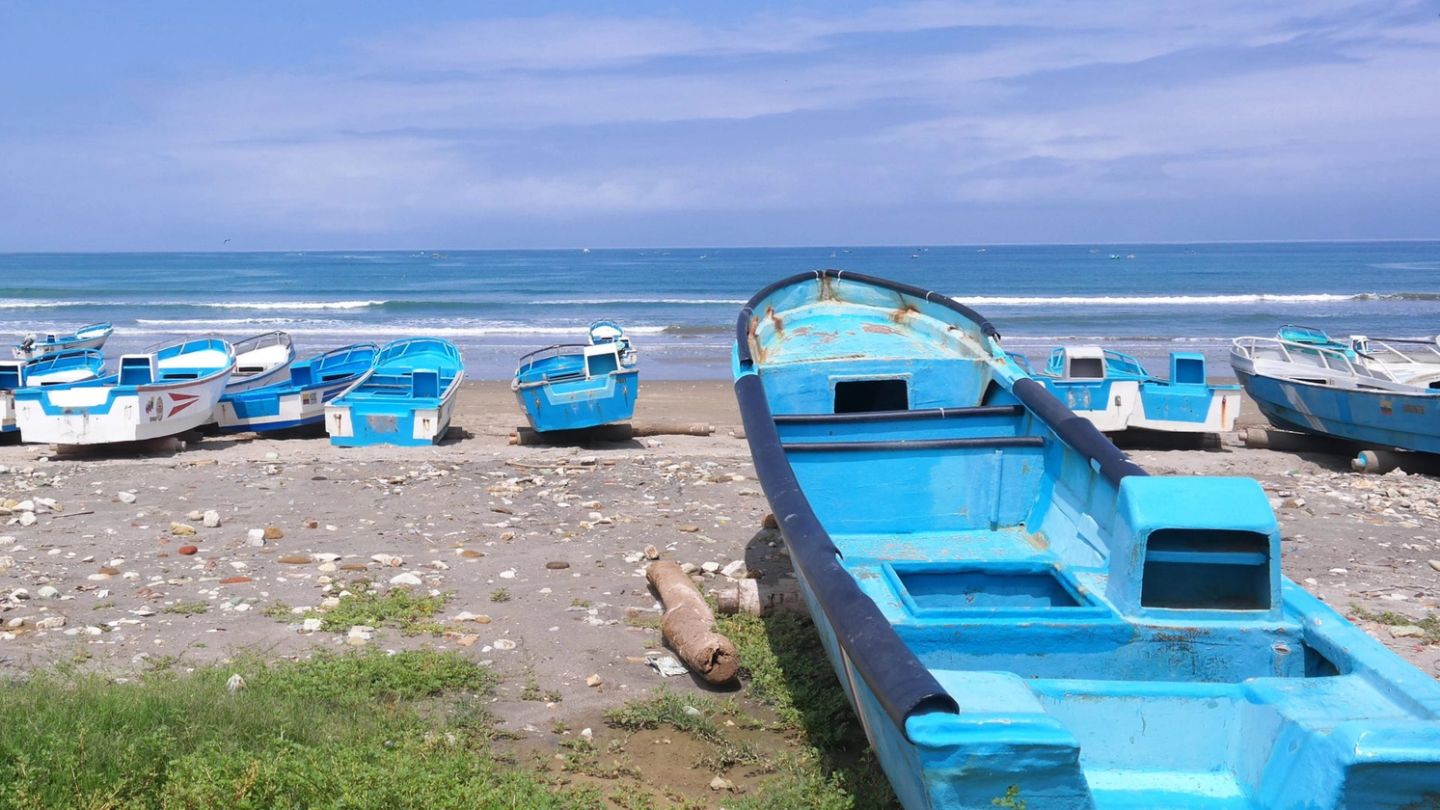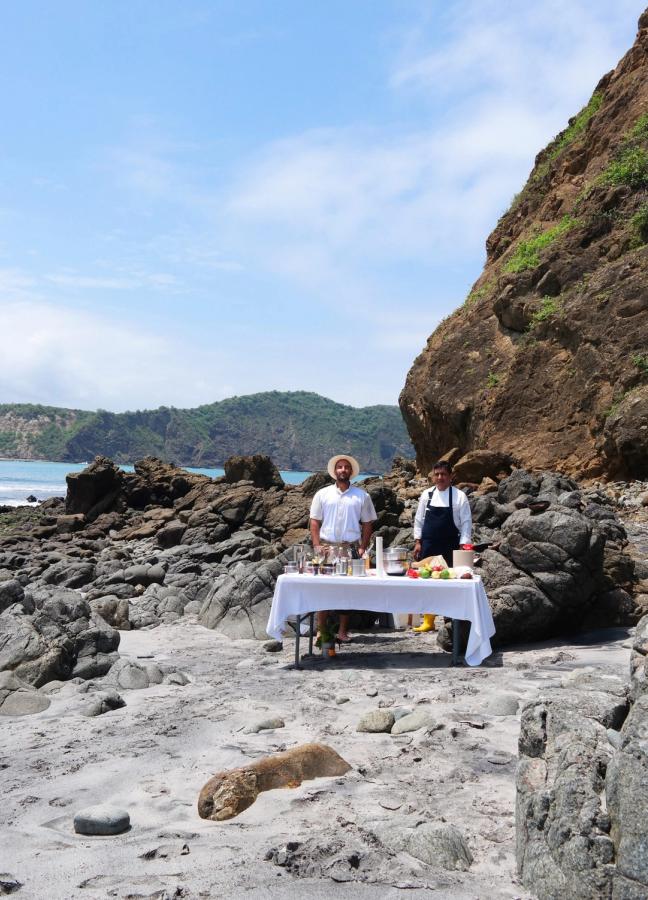

Here’s where you can find the freshest oysters in the world
Gentleman’s Journal plunges into the hot depths of Ecuador's Pacific Ocean’s fire belt, in search of some of the finest seafood in the world
Words: Jonathan Wells
Off the hot green coast of Ecuador, I’ve discovered a band of pirates — white-chested, fork-tailed and flying fiercely high above the waves. Shrewd and wicked, countless ruthless frigate-birds are sailing across the sky above me; their black eyes and hooked beaks trained on the dozens of fishing boats bobbing below.
They’re soaring in circles — heads tilted, wings trembling — and waiting for the first catch of the day to be hauled up onto the beach. When the fish-filled nets hit the sand, they strike — dive-bombing the locals and plundering the salty treasures for themselves.
I’m standing on the shoreline, watching the whole thing unfold from the relative shady safety of a palm tree. I’m also feeling slightly guilty. For, like the wily frigate-birds in the sky above me, I’m also in Puerto Cayo to snatch some seafood.
Six years ago, Rodrigo Pacheco created the Las Tanusas retreat — a haven for tastebud-led travellers perched on the coast of Ecuador’s easternmost point. A veteran of Michelin-starred establishments including Cannes’ La Palme d’Or and Alain Chapel in Mionnay, Pacheco built the retreat’s restaurant — BocaValdivia — to fuse his twin passions; fine dining and the natural world.
“I was inspired by the amazing cultural heritage,” says Pacheco, speaking over his shoulder as we wade out of the shade and into the warm waters towards a small blue boat. “These stunning landscapes made us fall in love with this place.”
‘Stunning’ barely begins to cover it. There’s something almost prehistoric about the tropical coast of Ecuador’s Manabí province. The beaches are rough and winding. The air is thick and earthy. Rusting aerial masts prop up the rolling jungle canopy like giant, ancient tent poles. And here, in the dappled waters of the Pacific Ocean’s fire belt, some of the best seafood in the world is still swimming around beneath this boat.
“We created a food ecosystem,” explains Pacheco of our day’s destination; the plucky, uninhabited Isla Cayo. “We don’t have a written menu back in the restaurant, so we forage and fish here every day — collecting over 400 products with our own hands. And the same team that prepares the food is this same team that goes out to catch it.”
Aboard our boat, we’re joined by a well-tanned cadre of BocaValdivia’s best; young men in baggy T-shirts itching to get into the water. And, sure enough, as we close in on Isla Cayo — a rocky dome crowned with a crop of curly jungle leaves — they silently nod to one another, snatch up knives and nets, and disappear into the cerulean sea.
Once every week, the gastronome guests at Las Tanusas are offered the chance to experience a remarkable, delectable meal on the shores of Isla Cayo. As they splash up the beach, they are handed a cocktail in a calabash rind (mine tastes like papaya and pineapples) and led towards a table laid for a fine-dining feast; all white table linens and silver cutlery.

Walter, Pacheco’s second-in-command, shakes my hand. From the apron strings up, the sous-chef is neatly turned-out, with combed hair and neatly pressed whites. But sand-stained trousers and bright yellow boots betray his true talents — as does he, soon scrambling off over the rocks to begin foraging for our six-course tasting menu.
“The coast of Manabí is easily one of the most biodiverse ecosystems in the world,” Pacheco lilts as we settle into our seats. “And not only the marine ecosystem, but also the tropical rainforest, the mangroves, the reef and the cloud forest. It makes things exceptional in terms of biodiversity — and is a paradise for any cook.”
"The coast of Manabí is one of the most biodiverse ecosystems in the world..."
The divers are certainly enjoying themselves. Leaping over rock pools and free-diving the reef, they’re on the hunt for that most elusive, exclusive ingredient: the oyster. One of the ocean’s most succulent, opulent foods, oysters are natural filters, and can clean their immediate waters of impurities and pollutants. Unfortunately, off the Manabí coast — where the sea is diamond clear and utterly untainted — oysters are out of a job.
“This is why wild oysters in Ecuador are amazing,” explains Pacheco. “Their retained natural sweetness makes them a beautiful delicacy, and this is why we encourage our guests to come with us and forage for them, while connecting with nature through gastronomic experiences.
“But they do melt into the landscape,” he laughs. “It can be hard to see and catch them in the reef and the rocks.”
That doesn’t seem to be a problem for the divers, who are zipping back up the beach with grins on their faces and several fist-sized oysters in their hands. Walter stands poised with his shucker, and soon sets about cracking into the shells and preparing our first course. Working with nothing but knives, bowls and the odd piece of fruit, the sun-kissed sous-chef seems to be conjuring a meal out of thin air.
And the first dish out of the magical island kitchen is ceviche — sliced oyster cured in lime juice. It’s a plate that would usually take an hour to prepare, but these oysters are so fresh that this took barely ten minutes. The flesh is yet to denature, Pacheco explains, so the antibacterial juice has less to do. Instead, garnished only with several scrapings of thick green zest, the dish is stunningly simple, simply stunning — and a headlong dive into the piquant, playful food of this country.
“Oysters are a very versatile product,” Pacheco chews. “And they are beautiful to work with because you can do so much with them.”
The next hour serves only to prove the chef right. On the isolated beach of the islet, five more courses are plucked from the ocean and presented to our table — via the scarred, skilful hands of sous-chef Walter. Oysters topped with onion so thin the sun shines through it. Shellfish swimming in bottomless bowls of passion fruit and artichoke sauce. Seafood that has navigated whirlpools of mango oil, rockfalls of crunchy salt and firestorms of jalapeño. All fresh, all natural, all implausibly good.
The divers return for good as we set down our forks. One of them is holding a harpoon with an octopus skewered on its end. Those, Pacheco nods at the creature’s eight limp legs, will likely become the centrepiece of BocaValdivia’s menu this evening — when he gets around to planning it. Each day, the chef decides on the dishes at the very last moment; constructing everything around the day’s catch.
Above us, the frigate-birds have arrived, and are eyeing the tentacled treasure. But the pirates don’t trouble Pacheco. BocaValdivia, he says, may be his greatest creation — but he’d rather serve every dish right here, on the clear virgin coast of Isla Cayo.
“Because I think it is very important that people reconnect with nature,” the chef smiles. “And this, here, is a bridge of reconciliation between humanity and nature. Through food, through love — through freshness.”
Abercrombie & Kent offer this experience as part of a 10 night tailor-made Discover Ecuador itinerary, from £3,995
For more travel inspiration, check out the best new hotels opening in 2020…
Join the Gentleman’s Journal Clubhouse here.


